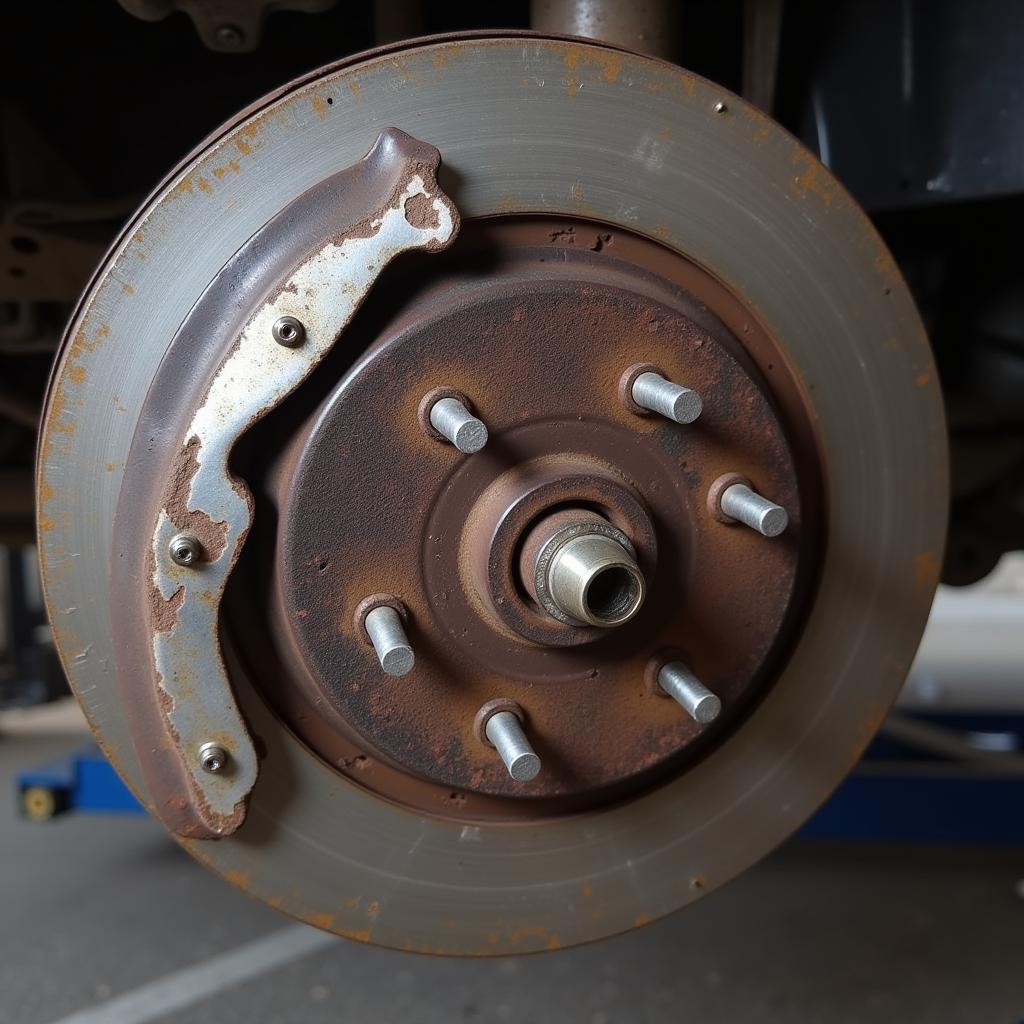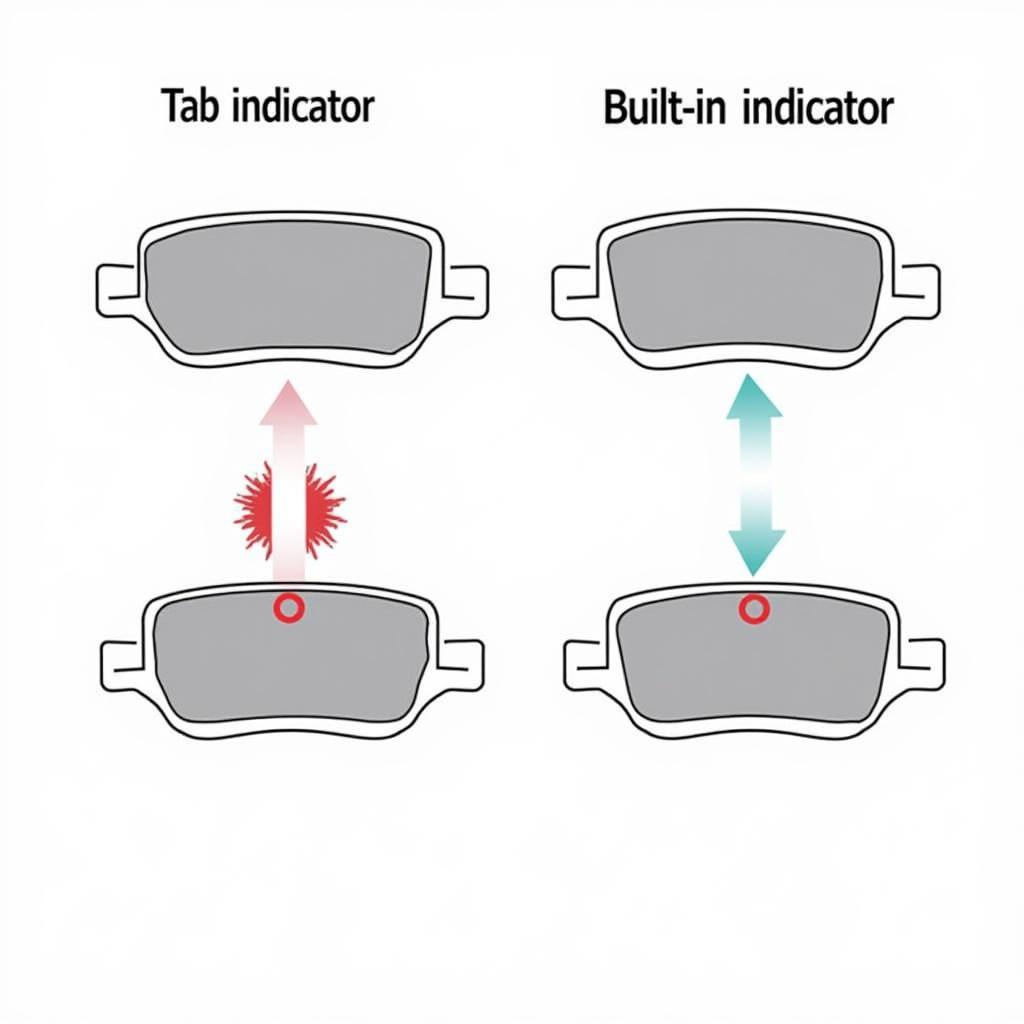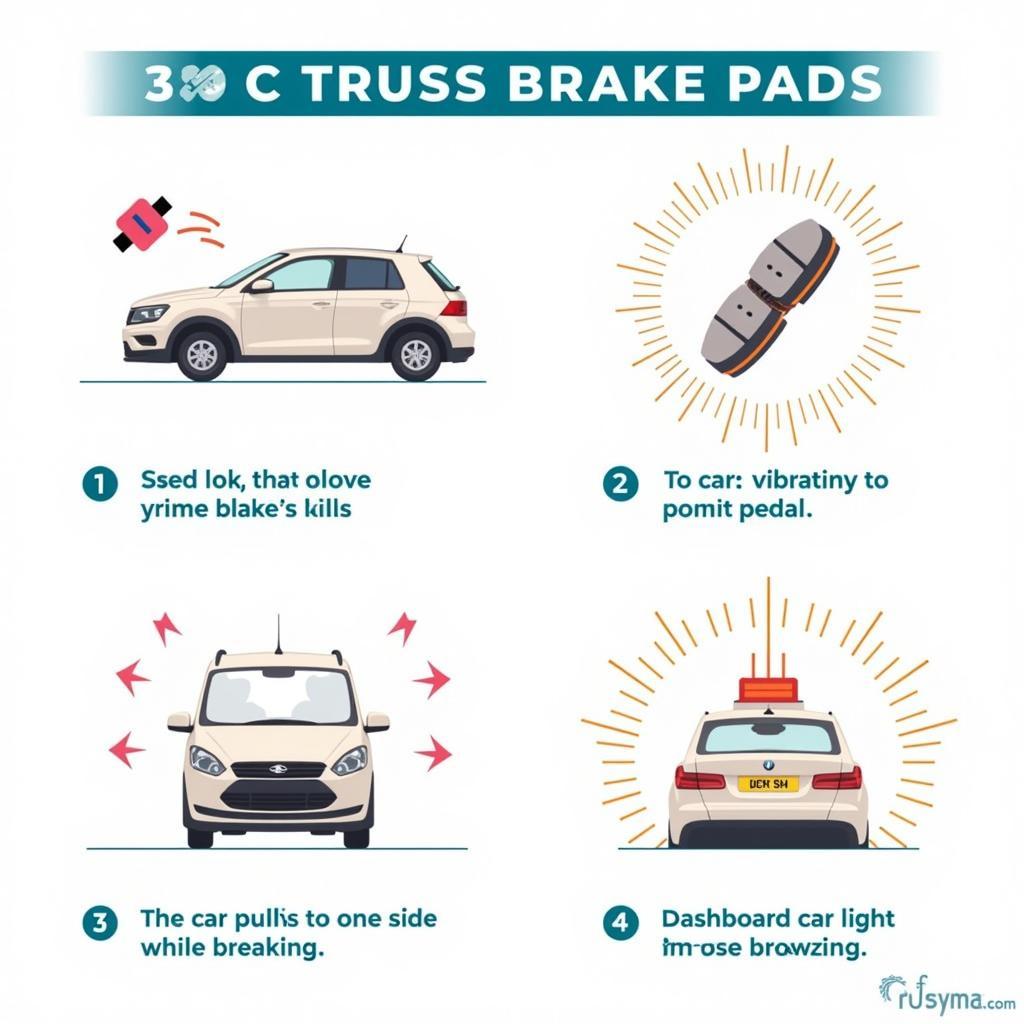Have you ever heard a high-pitched squealing or screeching sound coming from your brakes? This unpleasant noise could be your car’s way of telling you it’s time for new brake pads. This is known as an acoustic wear warning, and it’s a crucial safety feature built into many modern vehicles.
This article will explore acoustic wear warnings on brake pads, why they’re essential for your safety, and what to do when you hear that telltale squeal.
The Science Behind the Squeal: How Brake Pad Wear Indicators Work
Brake pads don’t simply wear down silently. In fact, they’re designed to give you an audible warning as they approach the end of their lifespan. This is achieved through a small, strategically placed metal tab called an indicator or wear sensor.
Here’s how it works:
- Wear and Tear: As you use your brakes, the friction material of the brake pads gradually wears down.
- Indicator Makes Contact: Eventually, the brake pad wears down enough that the metal indicator comes into direct contact with the brake rotor (the disc your brake pads clamp down on).
- Sounding the Alarm: This contact creates a high-pitched squealing or screeching sound, alerting you that it’s time for a brake inspection and likely a brake pad replacement.
 Brake Pad Wear Indicator
Brake Pad Wear Indicator
Why You Should Never Ignore the Squeal
Ignoring the acoustic wear warning can have serious consequences for both your safety and your wallet. Here’s why you should never put off addressing squealing brakes:
- Safety Risk: Driving with severely worn brake pads significantly reduces your stopping power, increasing the risk of accidents.
- Rotor Damage: Continuing to drive with worn pads allows the metal indicator (and eventually the metal backing plate of the pad) to grind against the rotor, potentially causing expensive damage.
- Costly Repairs: Replacing severely damaged rotors is far more expensive than simply replacing worn brake pads.
Types of Brake Pad Wear Indicators
Not all wear indicators are created equal. The two most common types are:
- Tab Indicators: These are the most common type, consisting of a small metal tab that sticks out from the brake pad’s surface.
- Built-In Indicators: Some pads have the indicator built directly into the brake pad material. As the pad wears down, the indicator is exposed, creating a different sound or sensation through the brake pedal.
 Brake Pad Wear Indicator Types
Brake Pad Wear Indicator Types
What to Do When You Hear the Warning
If you hear a squealing sound coming from your brakes, follow these steps:
- Don’t Panic: While the sound can be alarming, it’s a sign that the system is working.
- Schedule an Inspection: Take your vehicle to a qualified mechanic as soon as possible for a brake inspection.
- Follow Recommendations: Your mechanic will inspect your brakes and advise if you need a simple pad replacement or more extensive repairs.
“Remember, addressing brake issues promptly is crucial for your safety on the road,” says John Smith, a senior automotive engineer at XYZ Automotive. “Don’t wait for the squealing to become a grinding sound – that’s a sign of more serious damage.”
Beyond the Squeal: Other Signs of Worn Brake Pads
While the acoustic wear warning is designed to be your primary alert, there are other signs of worn brake pads to be aware of:
- Vibrations: Feeling a pulsing or vibrating sensation in the brake pedal.
- Pulling: Your car pulls to one side when braking.
- Grinding Noise: A grinding metal-on-metal sound when braking (this indicates severe wear and potential rotor damage).
- Warning Light: Some vehicles have a brake pad wear indicator light on the dashboard.
 Signs of Worn Brake Pads
Signs of Worn Brake Pads
Conclusion
Acoustic wear warnings on brake pads are a critical safety feature that should never be ignored. Recognizing this sound and addressing the issue promptly can save you from costly repairs and, more importantly, help keep you safe on the road. Regular brake inspections are also key to ensuring optimal brake performance and safety.


